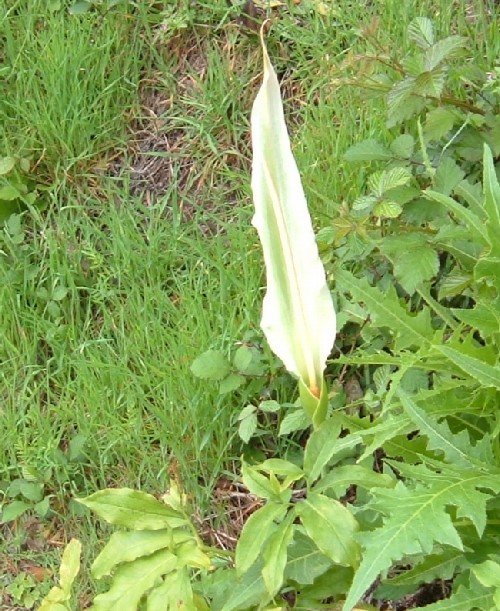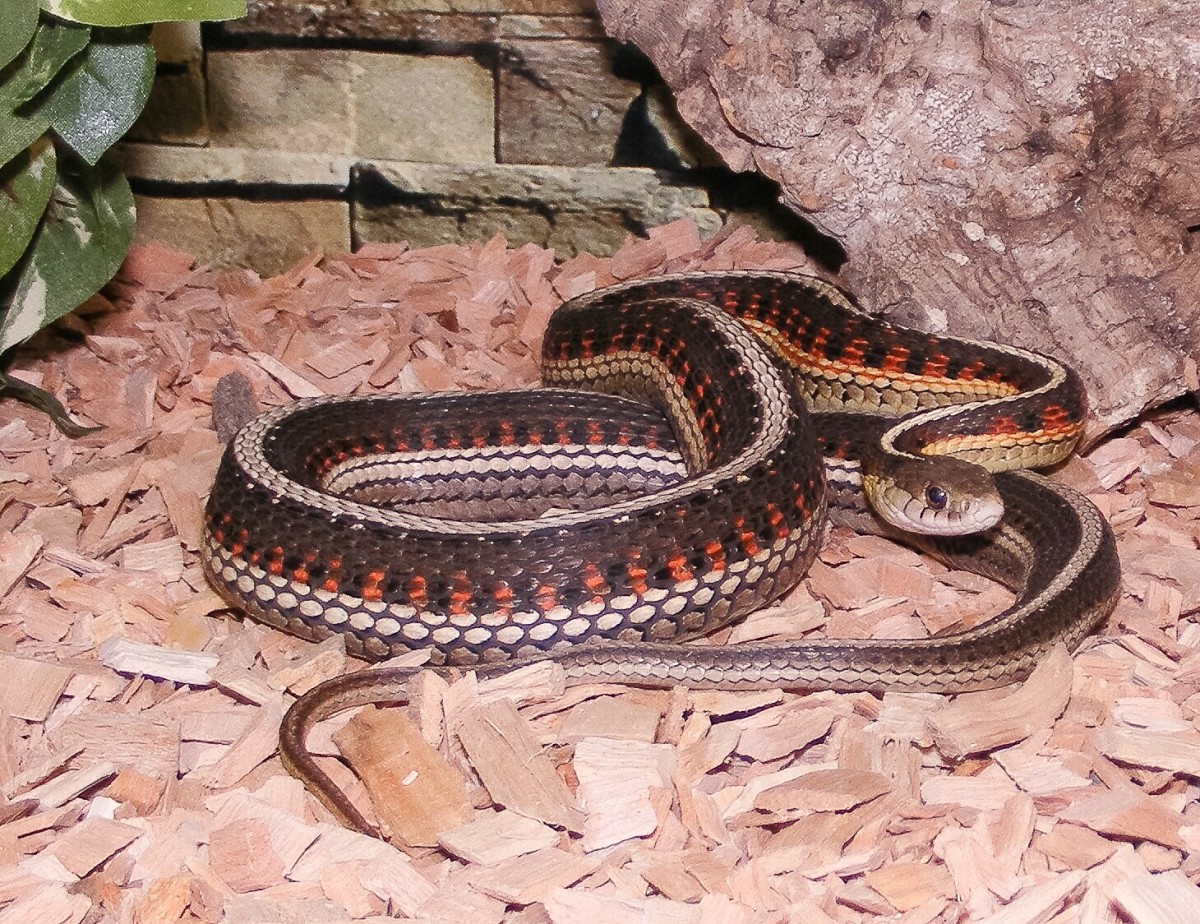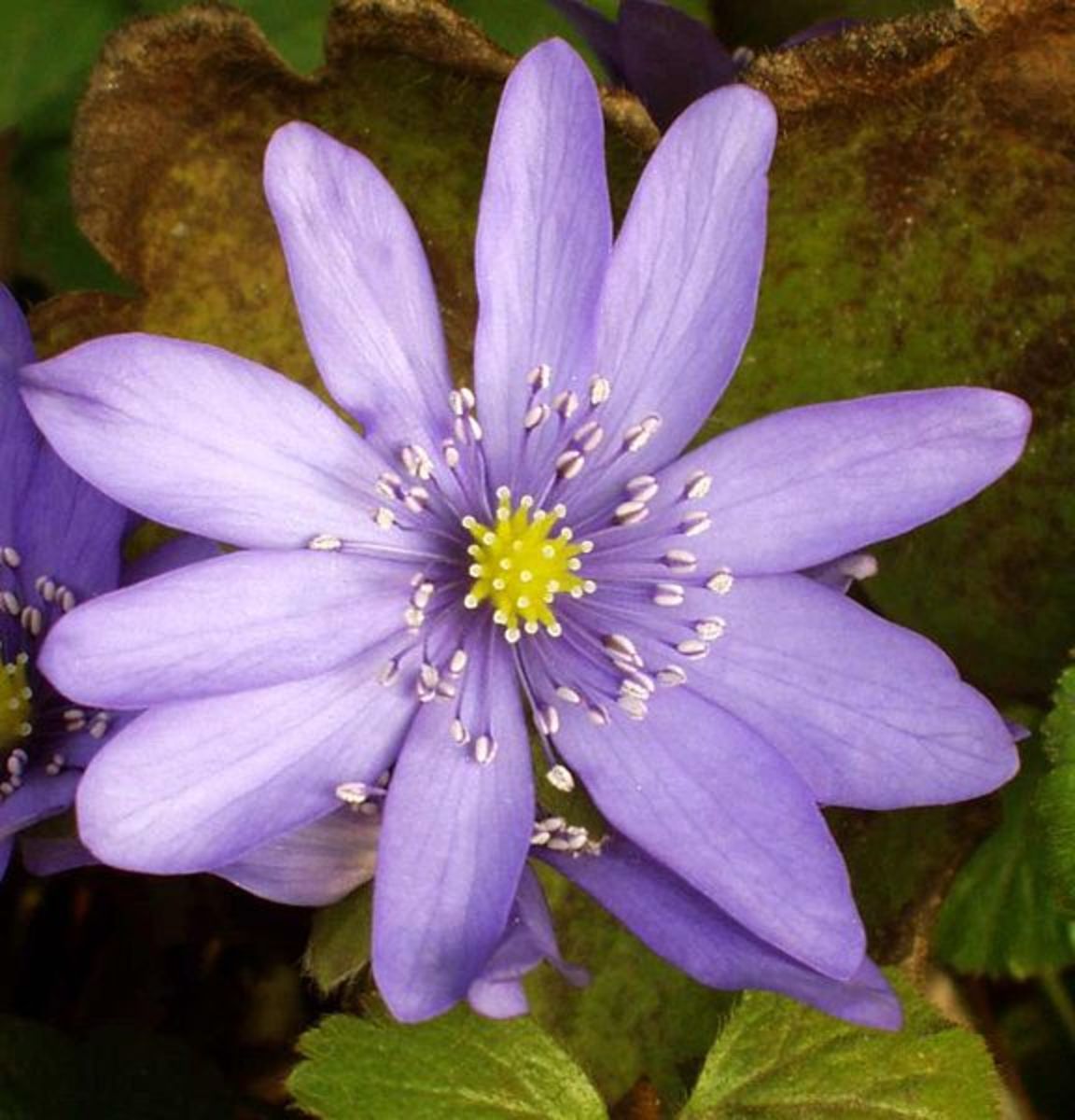Dracunculus canariensis is a rare and unusual wild flower
Dracunculus canariensis photo

The Canary Dragon Aroid
There is a very unusual wild flower found growing on the Canary Islands known as the Canary Dragon Aroid, or in Latin as Dracunculus canariensis . It is a species of arum lily in the Araceae family, which are noted for the sheaths that grow like hoods around the central part of the flowers.
Many species of aroid give off an unpleasant smell to attract flies as pollinators when they are in bloom. In the UK there is the common Cuckoo Pint or Lords-and-ladies (Arum maculatum ), which is a common sight in woodlands and hedgerows in spring with its spotted arrow-shaped leaves and hooded flowers that enclose a purple spadix and bright red berries that follow them at the top of the flowering stalks.
Dracunculus canariensis links
Related to the Voodoo Lily
Dracunculus canariensis is known in Spanish as "Tacarontilla", and is closely related to Dracunculus vulgaris and other species that have been made popular through horticultural trade as "Voodoo lilies." These plants are often sold and traded as tubers that can be grown to flowering stage without any soil or water. This novelty factor is what makes the plant so attractive to people who wish to grow them.
Naturally they grow much better if soil and water is provided. All of the aroids or arums produce spathes and spadices, in other words an outer sheath part and an inner spike which carries the tiny flowering parts at the base where the berries develop after pollination.
Most of the plants in this family flower in spring and die down afterwards. Most of them also attract insect pollinators by giving off a horrible smell like rotten meat.
The Canary Dragon Aroid grows in groups in waste ground and clear spaces below forests, and in Tenerife is mainly confined to some parts of the north of the island. Its creamy white flowers stand out in spring when they are produced.
Afterwards the red berries form in clusters and the leaves of the plant die back until next year.
Dracunculus canariensis is also found on El Hierro, La Palma and Gran Canaria but is becoming increasingly rare due to the land being used for farming, housing and other building developments.



